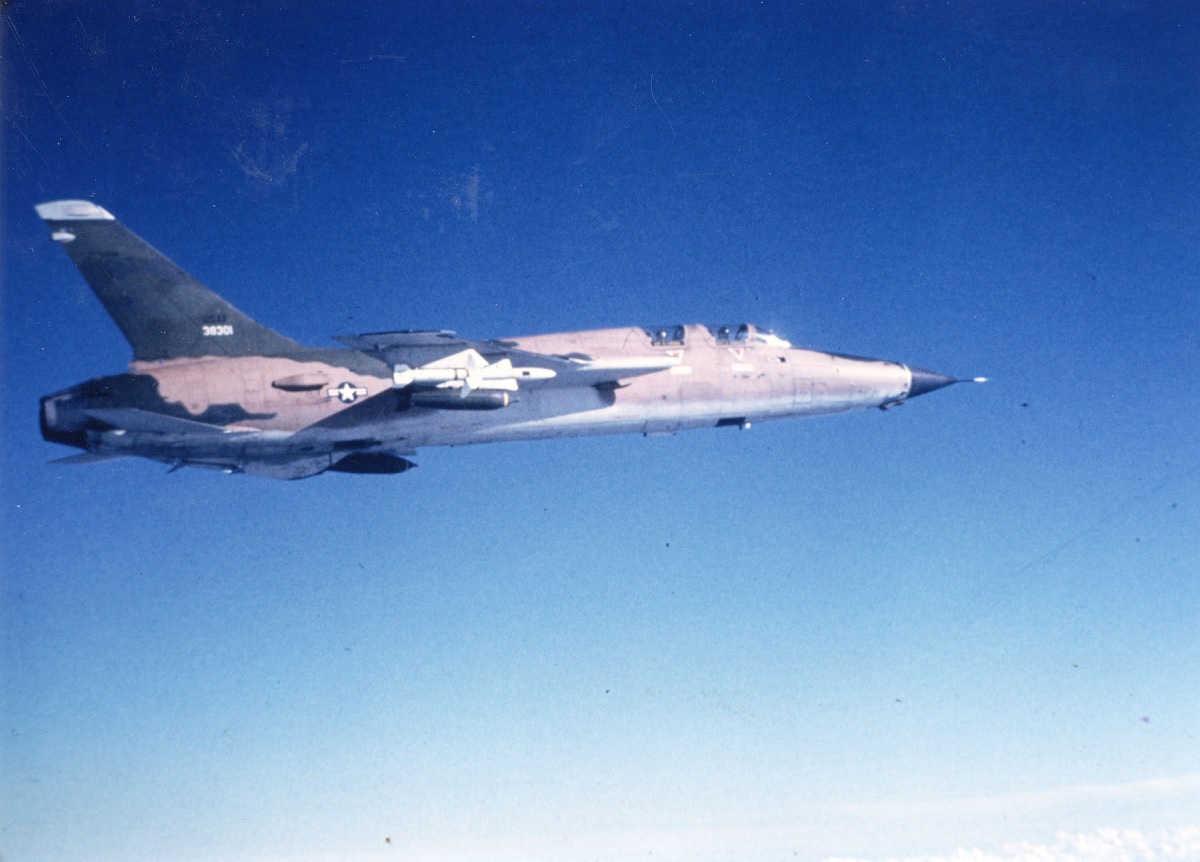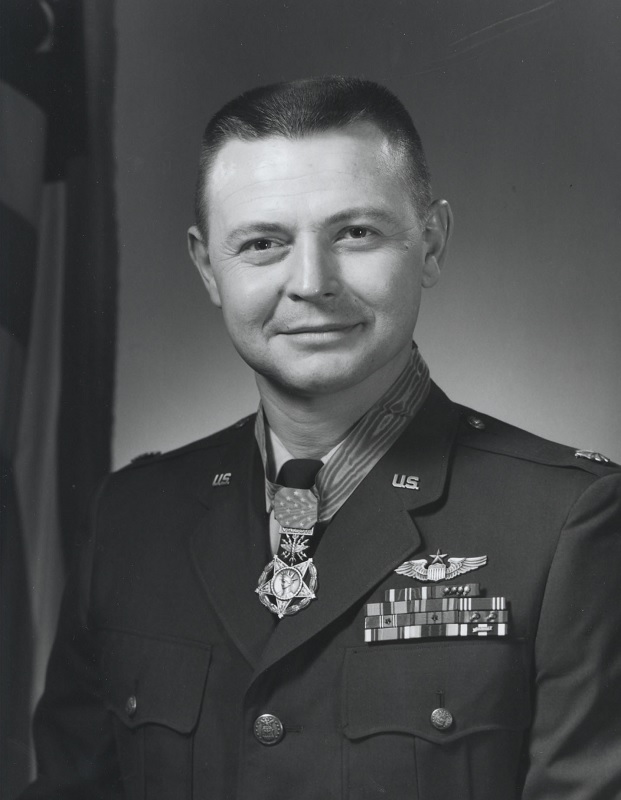Capt. Dethlefsen received the Medal of Honor for demonstrating exceptional bravery above and beyond the call of duty. On February 1st, 1968, President Johnson made the presentation in the White House
Operation Rolling Thunder had been ongoing for two years by March 1967, with little evidence that North Vietnam was backing down. The conflict between the US and North Vietnam gradually intensified.
The Hanoi regime upgraded its anti-air defenses from AAA to the deadlier SA-2 surface-to-air missiles as well as MiG aircraft as US airstrikes escalated. Since World War II, the skies over North Vietnam would be the most dangerous and challenging for American pilots to fly in.
The two-seat F-100F Super Sabres referred to as the Wild Weasels, were tasked with defense suppression at the beginning of Rolling Thunder. However, because of its restricted payload and inability to keep up with the F-105 Thunderchiefs, which were at the time carrying the bulk of the USAF’s strike missions, the F-100 was only a temporary answer for the Wild Weasel duty.
The first Wild Weasel Thunderchiefs made their way to Southeast Asia in June 1966. The 354th Tactical Fighter Squadron (TFS) at Takhli Royal Thai Air Force Base (RTAFB), which housed the F-105s of the 355th Tactical Fighter Wing (TFW), was one of the Wild Weasel units of the time. Before being sent out for Rolling Thunder, the 355th TFW had been using the Thunderchief at McConnell AFB in Kansas since 1962.
The Wild Weasel F-105Fs featured two crew members, the pilot and the electronic warfare officer (EWO), also known as “Bear,” in the back.

The substantial Thai Nguyen steel works were ultimately added to the target portfolio on March 10, 1967.
James Geer describes how on that particular day Capt. Merlyn H. Dethlefsen flew from Takhli on an Iron Hand (SAM suppression) mission against the air defenses surrounding the Thai Nguyen steel works in his book The Republic F-105 Thunderchief Wing and Squadron Histories. His third position in a flight of four Thuds, consisting of two EF-105Fs and two F-105Ds operating as hunter-killer teams, was his 78th combat mission.
The flight encountered heavy AAA fire as they got closer to the target area. Amidst the bursting shells, Dethlefsen trailed the two lead aircraft by roughly 3,000 to 5,000 feet. After locating a SAM site, the lead aircraft attempted to unleash a Shrike missile, but it was unsuccessful. The enemy gunners had better aim. The flight leader was shot down, and his wingman took significant damage and had to give up.
Dethlefsen took control of the flight and circled the target area before maneuvering his aircraft for a second pass at the target. He saw two MiG-21s aiming behind his Thud just as he and his backseater, Capt. Kevin “Mike” Gilroy, had discovered the SAM site. As one of the MiGs launched a missile at his aircraft, he fired a Shrike missile at the SAM position and dove into a mushroom of flak. His evasive action was successful because the MiGs did not pursue him into the barrage of AAA fire.
Dethlefsen changed his direction to get a better look at the SAM site so he could determine if he had been successful in knocking it out. The steel mills were being bombed by the strike force’s initial elements at this point, covering the target area in a cloud of dust and smoke. Dethlefsen observed two MiGs trying to position themselves behind his aircraft as he could see enemy missiles streaking up toward the strike force through the cloud. Dethlefsen observed that he had been damaged by the AAA fire on his second pass after shaking the MiGs with a Light left break.

Dethlefsen halted his run to inspect his damaged Thud as the striking force finished its assault. The 57-mm gunner had damaged the bottom of the fuselage, but fortunately, the engine and flight control systems remained unharmed. He made the decision to re-engage the missile defense system after realizing that he had missed the SAM site and that the steel complex was a crucial target that would require additional bombing over the course of the following few days.
Dethlefsen noticed the SAM site squarely in front of him after maneuvering around the flak pattern. The second Shrike missile he launched immediately caused the site to go off the air. Dethlefsen placed his Thud on the deck to put the finishing touches on the site while a cloud of debris and smoke continued to linger over the target area. He located the SAM’s radar van, dropped his bombs directly on it, and then made a strafing pass with his 20-mm weapon to completely demolish the site.
Capt. Dethlefsen received the Medal of Honor for demonstrating exceptional bravery above and beyond the call of duty. On February 1st, 1968, President Johnson made the presentation in the White House.
The Republic F-105 Thunderchief Wing and Squadron Histories is published by Schiffer Publishing and is available to order here.
Photo by: U.S. Air Force

